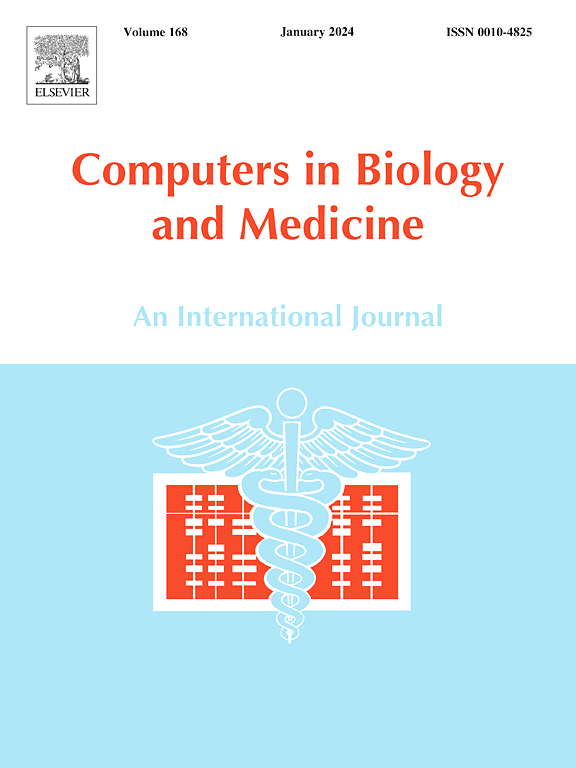Two-dimensional vessel wall diffusion anisotropy of human carotids – A novel measure of vascular ageing?
IF 6.3
2区 医学
Q1 BIOLOGY
引用次数: 0
Abstract
Background
Magnetic resonance (MR) diffusion tensor imaging (DTI) is a new, non-invasive method to investigate arterial vessel walls. High resolution diffusion weighted imaging (DWI) in combination with a two-dimensional (2D) diffusion gradient sampling scheme has recently been demonstrated as feasible for evaluating diffusivity in the vessel wall of human carotids. We aimed to identify associations of altered diffusivity in human carotids with presence or absence of cardiovascular disease, body mass index (BMI), sex and age in a clinical setting.
Methods
In this single center case-control study we used DWI in combination with a 2D gradient in a 3 T MRI scanner to evaluate diffusivity parameters in carotid vessel walls of clinical patients with known cardiovascular disease (n = 17) and healthy controls (n = 21). We used a read-out segmented EPI (rs-EPI) sequence for DWI.
Results
A group comparison showed significantly decreased fractional anisotropy (FA) in patients older than 60 years (p < 0.001) and in patients with a BMI higher than 25 (p = 0.019). Patients with cardiovascular disease had higher values for mean diffusivity (p = 0.005) than patients without cardiovascular disease. A multiple linear regression analysis showed age and sex to be associated with FA.
Conclusion
Two-dimensional vessel wall DTI of human carotids is feasible for clinical research. Besides patient age, we identified Sex, BMI, or the presence of cardiovascular disease as relevant factors for carotid vessel wall diffusivity. Decreased FA values might indicate early-stage atherosclerosis and vascular ageing.
人颈动脉二维血管壁扩散各向异性——血管老化的新方法?
磁共振(MR)弥散张量成像(DTI)是一种新的、无创的动脉血管壁检测方法。高分辨率弥散加权成像(DWI)结合二维(2D)弥散梯度采样方案最近被证明是评估人颈动脉血管壁弥散性的可行方法。我们的目的是在临床环境中确定人类颈动脉弥散性改变与存在或不存在心血管疾病、体重指数(BMI)、性别和年龄的关系。方法在这项单中心病例对照研究中,我们使用DWI结合3t MRI扫描仪的2D梯度来评估临床已知心血管疾病患者(n = 17)和健康对照(n = 21)的颈动脉血管壁弥散性参数。我们对DWI使用读出分段EPI (rs-EPI)序列。结果sa组比较显示,60岁以上患者的分数各向异性(FA)显著降低(p <;0.001)和BMI高于25的患者(p = 0.019)。心血管疾病患者的平均扩散系数高于无心血管疾病患者(p = 0.005)。多元线性回归分析显示年龄和性别与FA相关。结论人颈动脉二维血管壁DTI在临床研究中是可行的。除了患者年龄外,我们还确定了性别、BMI或心血管疾病的存在是影响颈动脉血管壁弥漫性的相关因素。FA值降低可能提示早期动脉粥样硬化和血管老化。
本文章由计算机程序翻译,如有差异,请以英文原文为准。
求助全文
约1分钟内获得全文
求助全文
来源期刊

Computers in biology and medicine
工程技术-工程:生物医学
CiteScore
11.70
自引率
10.40%
发文量
1086
审稿时长
74 days
期刊介绍:
Computers in Biology and Medicine is an international forum for sharing groundbreaking advancements in the use of computers in bioscience and medicine. This journal serves as a medium for communicating essential research, instruction, ideas, and information regarding the rapidly evolving field of computer applications in these domains. By encouraging the exchange of knowledge, we aim to facilitate progress and innovation in the utilization of computers in biology and medicine.
 求助内容:
求助内容: 应助结果提醒方式:
应助结果提醒方式:


